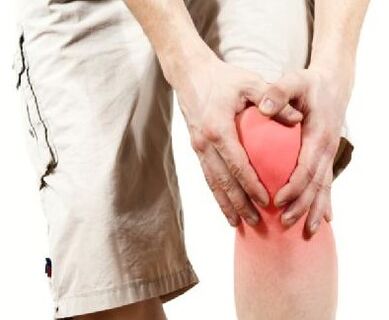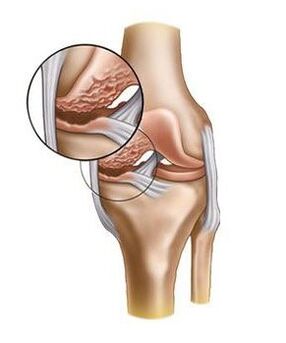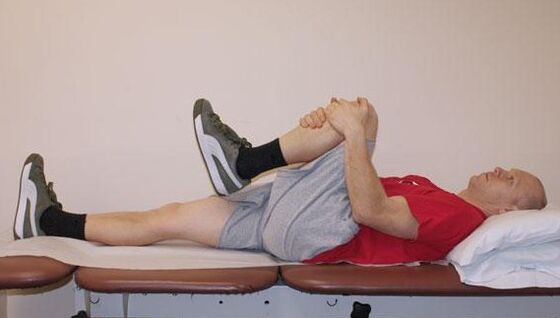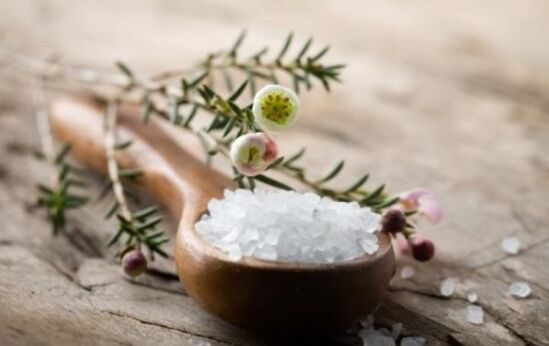The osteoarthritis of the knee joint is a slow progressive, inflammatory plastic joints. Most of the time, this disease is observed in medium and older people and is the most common cause of muscular pain in the skeleton muscular in the zone of the knee joint and the disability. From this publication you will learn how to treat osteoarthritis of the knee joint.

General description
In the knee joint, femur and tibia are covered with articular cartilage. There is also a second type of cartilage tissue that forms the so -called menisci, which act as layers or shock absorbers. The articular fluid increases additional protection and smoothness. Osteoarthrosis begins to develop when the cartilage that protects the bones is disturbed and damaged, whereby the surface of the bones is uncovered and the joint lubricant is no longer produced in the required amount. In this case, both complete and partial cartilage loss can be observed. This process is often insulated by a certain area in the connection, in such cases it can be caused by injuries and chronic joint wear.
The deforming arthrosis of the knee joint is characterized by the process of destroying its cartilage shells. In the future, the closest substances such as ligaments and bones can also be included in the process. The gonarthrosis or osteoarthritis of the knee joint due to the cartilage loss is accompanied by an increase in rigidity and joint deformation. Bone spores (osteophytes), which are a pathological growth of bones, can sometimes even feel from the outside. The surfaces of the bones are deformed and no longer nearby and do not fit like in healthy joints. As a result, the restriction of movements increases.
At the same time, pain occurs, which is particularly severe if it moves after a long immobility in the morning and at night, which ultimately leads to a return of the quality of life. Stress can also cause pain in the affected joint. An indirect sign of the pathological cartilage change is the visible narrowing of the joint cavity between the Femur and Tibia in the X -Ray picture.

Reasons
There are several reasons for osteoarthritis: This is the process of aging and wear of cartilage, obesity, injuries, autoimmune diseases, in which immunity attacks its own joint tissue and causes inflammation and subsequent destruction. An example is rheumatoid arthritis, in which both joints are affected at the same time and develops a disability. Some experts combine concepts such as arthritus and arthrosis of the knee joint, the symptoms of these diseases are similar and are often caused by the same reason.
A reduction in blood supply to the thigh head can also lead to a regular deformation, in this case you speak of aseptic necrosis. Inadequate formation of the knee joint in early childhood can lead to the shift in the mechanical axis and the degeneration of the knee joint. Post -traumatic arthrosis are secondary and develop due to damage to meniscus, front or rear cross bands.
Symptoms
There is three degrees of osteoarthritis of the knee joint, each with their own signs. In the first phase there is slight pain, discomfort in a painful point and regular swelling. The second degree is accompanied by an increase in symptoms, the occurrence of crunches and a restriction of mobility. If the painful sensations are practically left and the cartilage is thoroughly destroyed, the disease is passed into the osteoarthritis of the knee of the third degree.
Pain against arthrosis can suddenly occur, but mostly it develops slowly. A person can notice pain in the morning after lifting. The knees can hurt when they go up the stairs or if they have to have their knees, and often only pain occurs during a walk. When changing weather, weather changes can also cause joint pain.
Swelling is a result of inflammation that regularly increases with osteoarthritis. Edema can also be connected to the formation of bone spores or the accumulation of excess liquid in the knee. After a long period of inactivity, for example, you can be more pronounced in the morning or after a long stay on the desktop. The skin can get reddish and hot when touched. When the joint inflammation occurs, the removal of pain and edema is usually achieved by taking inflammatory medication.

The loss of stability develops over time due to the weakening of the muscles and the instability of the entire system. From time to time, situations arise when a person is simply unable to bend his leg in your knee or to smooth it completely. Such a symptom is usually accompanied by osteoarthritis of the knee joint of the 2nd degree. A grinding will be felt during movement, since the cartilage has lost its original smoothness and the required amount of synovial lubrication. In the later stages, a creaking sound can be caused by rubbing against each other when moving bone spores.
The limited movement can be seen when climbing the stairs or during training. Many are forced to use the help of hikers or canes to move. The deformation of the knee joint is perhaps the most terrible symptom of osteoarthritis, since it indicates irreversible changes in the joint and transforms a person into a disabled person. The knees can be turned both inside and outside. The deformation of the knee is hardly aware of significant problem.
Diagnosis
The definition of osteoarthritis of the knee joint begins with the physical examination of the doctor, the examination of the medical history and the conversation with the patient. Make sure to pay attention to the doctor who often causes pain and tell us, if at all, about cases of the disease in the family.
Additional diagnosis is done with:
- Radiography that can show the presence of bone spores and changes in the cartilage;
- Magnetic resonance imaging;
- With blood tests you can identify autoimmune diseases.
How do you treat osteoarthritis of the knee joint, which medication are required for this? Keep looking for answers to these questions.
The principles of treatment
The standard treatment of such a disease as arthrosis of the knee joint is mainly aimed at eliminating pain and eliminating functional restrictions. It is known that pain relievers only weaken the symptoms, but are unable to influence the course of the disease and restore the damaged cartilage. Narcotic analgesics, non -steroidal anti -inflammatory drugs, slow gold preparations, corticosteroids, methotrexate, etc. are used for treatment.

In addition, surgical interventions as well as physiotherapy and physiotherapy methods may be necessary. The gymnastics with osteoarthritis of the knee joint helps considerably with the treatment. Exercises are selected by the applicable doctor. Despite the fact that in modern pharmacology active research and development of the most effective and at the same time the safest medication for the treatment of osteoarthritis, most medications still have their side effects and disturb the normal function of systems and organs.
Treatment with medication
The drug therapy of osteoarthritis of the knee joint ensures three main directions:
- the use of non -steroidal anti -inflammatory drugs that are needed to relieve pain and reduce the intensity of the inflammatory process in the tissues;
- Taking medication for restoring cartilage, which includes chondroprotectors: glucosamine and chondroitin;
- The use of creams and ointments in the complex therapy of deformation arthrosis.
In combination with physiotherapy and manual therapy, taking medication allows the destruction of the articular cartilage, the regeneration of cartilage tissue and the normal function of the limb.
The main goal of drug treatment is to eliminate pain, improvement in the nutrition of cartilage, the activation of recreational processes, the increase in joint mobility and the normalization of the bloodstream in the knee.
Nestroid medication
The most common for the treatment of osteoarthritis are such non -steroidal anti -inflammatory drugs such as Diclofenac, Indomethacin, Pyroxykam, Ketoprofen and others. They are used to relieve pain and reduce inflammation, but long-term treatment with these medication is not recommended because the medication in this group has undesirable side effects, including the negative effects on the gastric mucosa and intestine, the effect of kidneys, liver and cardiovascular system. However, every medication has its own characteristics. And lately, funds have been developed with a minimum risk for the patient's health.
Despite the need to use these tools, some studies showed that NSAIDs can lead to a decrease in producer production of protoglycanes, which dehydrates the cartilage tissue so that such medication must only be taken after prescribing the doctor and under his control. The frequency of the side effects of NSAIDS increases with their longer use, which acts as a necessity for many patients with osteoarthritis. Experts recommend choosing selective anti -inflammatory drugs for long -term use, having fewer side effects and do not have a negative impact on the metabolism in the cartilage.

Most non -steroidal anti -inflammatory drugs are produced in different forms: in the form of capsules or tablets in the form of a solution for injections and ointments or gels for local external use.
Restoration of the cartilage
The constant absorption of connections such as chondroprotectors - glucosamine and chondroitine - is required for the nutrition and regeneration of cartilage to his tissues. These are useful substances for people who suffer from knee roof arthritis. Your reception should be carried out for a very long time, from six months or longer, only in this case you can count on a positive therapeutic effect. Chondroprotectors improve the quality and amount of synovial fluid, in contrast to NSAIDS, increase the synthesis of prototoglycans and contribute to the regeneration of the cartilage plate. Due to such useful properties of these compounds, however, they should not be regarded as the main treatment of osteoarthritis. The deformation of the arthrosis of the knee joint requires the use of chondroitine and glucosamine preparations for at least 1, 5 years. It is also taken into account that you cannot restore a completely destroyed cartilage.
Ointments and creams
The treatment of an illness such as arthrosis of the knee joint should include the local use of gels and ointments. These forms of dosage should not be the only option for therapy. Their use should be regarded as the required addition to the receipt of NSAIDS and chondroprotectors. Such drugs significantly reduce symptoms, pain, swelling and improvement in joint mobility.
This effect is explained by the fact that penetration into the blood through skin, ointments and creams improve blood circulation in the joint, accelerate the metabolism in the cartilage and accordingly to its regeneration.
Compress
Applications for arthrosis have a greater effect than the use of ointments. In the case of therapeutic compresses, the dimexid tool is often prescribed, which has a good anti -inflammatory and analgesic effect, is incorporated into the tissue. Bishophytes are also effective and accelerates metabolic processes in the cartilage.
Injections

Within the knee joint, the synovial fluid is very viscous, which ensures the lack of tissue functions. An important part of this lubricant is hyaluronic acid that binds prototoglycans to stabilize the structure of the cartilage tissue. In patients with osteoarthritis, the level of this connection in the synovial fluid is significantly reduced, the latter becomes less viscous and the friction increases.
Injections in the knee of drugs based on hyaluronic acid can slow down the progression of osteoarthritis, but only half of the people with such a diagnosis receive symptomatic relief. The course of the injections is usually three weeks, while an injection is carried out every seven days. After six months it is recommended to be repeated.
Folk remedy
The osteoarthritis of the knee joint ensures an integrated treatment approach, and recipes for traditional medicine will serve as additional therapy. Means such as a decoction of onion shells, an infusion of dandelion leaves, a mixture of aloe, vodka and honey in the same volumes, night compresses made of salt with honey and many others earn attention. It is also recommended to eat more jelly and jelly.
Exchange of the joint
If all the methods mentioned above did not achieve the result, the operation for replacing the joint is shown by an endoprosthesis. The main goal of the operation is to restore the natural mechanical axis of the leg and to complete the release of pain and symptoms. In this case, either part of the connection or the entire connection can be replaced. The constant improvement of the surgical devices and the quality of the implants has rightly and widely made such a procedure.

























